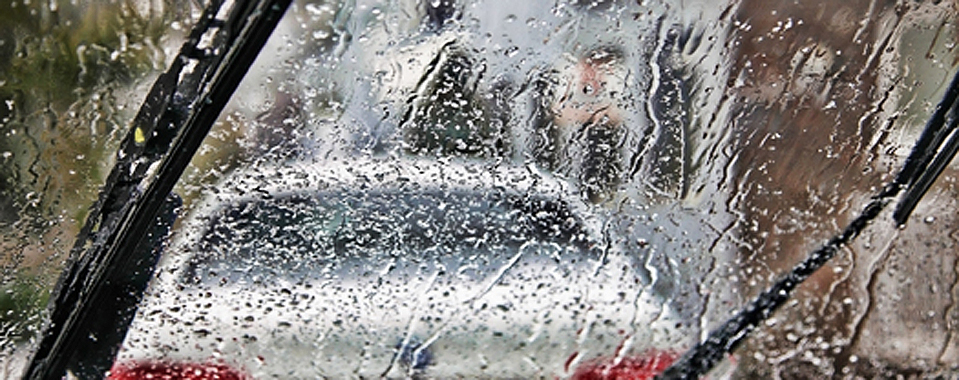Driving in conditions that involve heavy wind and rain may not seem like the most pressing safety concern for many drivers but remember that severe weather demands your undivided attention. So be sure to reduce any possible distractions by turning the radio down and turning your phone on silent to keep your attention fully on the road.

Driving in Heavy Winds
Wind may seem like a minor risk, but this weather condition deserves special consideration from drivers. Strong wind can occur just about anywhere, but it can be more common in wide open spaces. Areas for concern also include highway overpasses, tunnels and ‘road cuts’ through mountainous areas that can act as funnels for wind. The following tips can help keep you on the road and safe if you encounter heavy winds.
- Anticipate wind gusts: Be extra careful when driving through areas prone to strong winds (such as bridges) or when weather reports predict severe weather.
- Notice larger vehicles: Be aware of large vehicles on the road such as semis, buses, and vehicles pulling trailers. They are more susceptible to high winds and drivers may have difficulties staying in their lanes.
- Keep a firm grip on the wheel: Keep both hands on the wheel in case the wind begins to move your vehicle, especially if you are driving a large vehicle or towing a trailer.
Driving in Heavy Rain
In addition to the potentially poor visibility that accompanies most heavy rain, drivers should be ready to protect themselves against hydroplaning. Hydroplaning can occur when a vehicle is traveling too fast in heavy rain conditions, causing the vehicle’s tires to travel on a thin layer of water rather than grip the surface of the road. This has the potential to make steering and braking difficult and could even lead to losing control of your vehicle. Here are some tips to help you this rainy season!
- Take your time: Slowing down is the only way to keep your vehicle from hydroplaning. Also remember that one of the most dangerous times to drive is soon after it begins to rain, as oils on roadway make for slick conditions. Waiting a few minutes, rather than rushing to your destination, can be a safer plan when it is raining.
- Turn your lights on: Turn your headlights on to help other vehicles see you.
- Give other vehicles more space: Add 1-2 extra seconds of following time in the rain, which gives you and the cars behind you more time to react to traffic.
- Avoid driving in vehicle’s blind spots: During rain storms, it is harder to see and drivers need to remain very alert. By avoiding driving in other vehicle’s blind spot, you are giving them one less thing to worry about.
- Be aware of you speed: In poor driving conditions, such as bad weather, going the posted speed limit could be dangerous. For example, if you were going 55 in a 55mph zone during a rain storm, you could be charged with reckless driving or a similar charge.
Overall, our biggest tip is that when storms are going on, if you do not need to be driving on the road, then please stay at home for your own safety.
